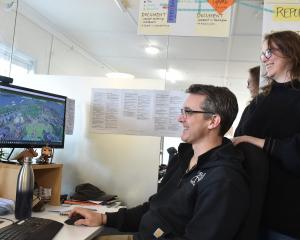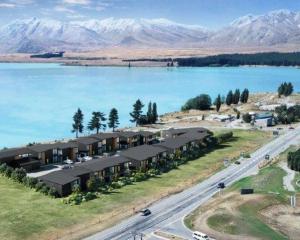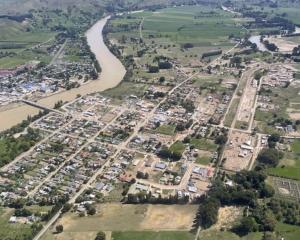The need to diversify Otago's economy was clearly identified in a report released yesterday by Economic Development Minister Steven Joyce, Otago Chamber of Commerce president Peter McIntyre said.
While welcoming the Regional Economic Activity Report, Mr McIntyre said it identified how reliant Otago was on the Government for jobs through the health and education sectors.
''We need to diversify where we can while still maintaining our strong links with those sectors. It is important to take advantage of other opportunities which we come across.''
Otago, and Dunedin in particular, had known for a while that population growth was slow or static, he said in an interview. Some sectors had been hit by technology changes and jobs were lost in places such as Hillside and Fisher and Paykel Appliances.
Otago needed to look at other areas of the country to try to find success it could replicate, Mr McIntyre said.
''If we look at Christchurch, there is a change of attitude towards how businesses there will be doing business. They are realising they need us as much as we need them as the rebuild continues for another five to 10 years.''
Asked about the type of jobs he was considering for Otago, Mr McIntyre said Dunedin had a recognised strong service sector - professionals such as lawyers and accountants - but that the service industry needed to work together through the hinterland to create a sector of national significance.
Information technology and tourism offered job opportunities, and that could be combined with tertiary institutions and their courses, he said.
''This is also a chance for the Government to play a role by diversifying some of its core functions to places like Dunedin. It would only take one or two relocations to send a signal that Dunedin was a good place to come and do business from.''
Otago-Southland Employers' Association chief executive John Scandrett said there was a wide range of material in the report and, as expected, there were positive and negative aspects. In Otago and Southland, the good news was that the region was placed above the national average on employed share of working age population with Southland heading the country by a considerable margin.
But in both provinces, household annual income levels trailed the $80,000 national figure, he said.
''Finding ways of expanding regional productivity and, as a consequence lifting take-home wage and salary levels, should be a priority and thankfully there are local initiatives that are currently aimed at addressing those issues.''
Part of the answer on expanding regional economic growth must revolve around urgency in resetting the job mix focus, Mr Scandrett said.
In Otago, manufacturing employee engagement needed to be lifted from the current 9% sector involvement to above the national average of 11% of the industry mix.
The region scored well on research and development and innovation-targeted activities. Getting new firms up and running, and keeping them running, was vital.
Those goals assumed greater importance when it was seen that forward population growth for Otago and Southland from 2012 to 2031 was listed as tracking considerably behind the national projections, Mr Scandrett said.
Mr Joyce said the regional report pulled together for the first time in one place the available economic data on all regions. It provided a breakdown, at the regional level, of some of the specific initiatives the Government had under way in its Business Growth Agenda.
''The report is designed to encourage more debate about what it takes for a region like Otago to be successful and to more clearly link the decisions that are made by local stakeholders about resource allocation and usage to the number of jobs available in a region.''
The report showed the strengths, challenges and opportunities in the Otago economy, Mr Joyce said.
OTAGO
Otago is the second-largest region in New Zealand by land area and accounts for 5% of New Zealand's economy in employment terms. Its household incomes are lower than the national average but its employment rate is above the national average. These factors relate to the very high proportion of tertiary students in Dunedin, some of whom work part-time, and the significant presence of seasonal labour in other parts of the region.












